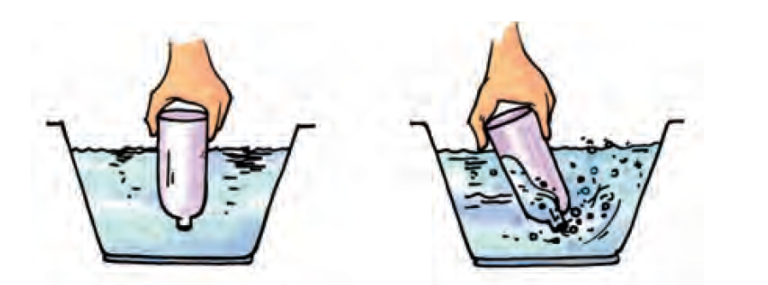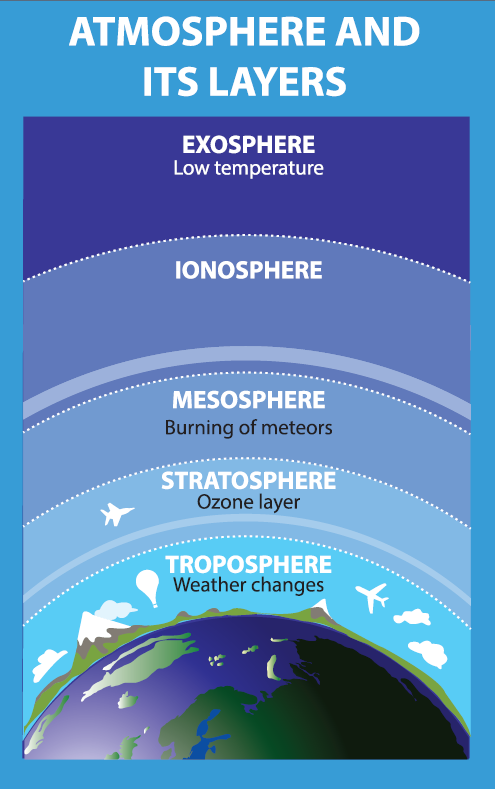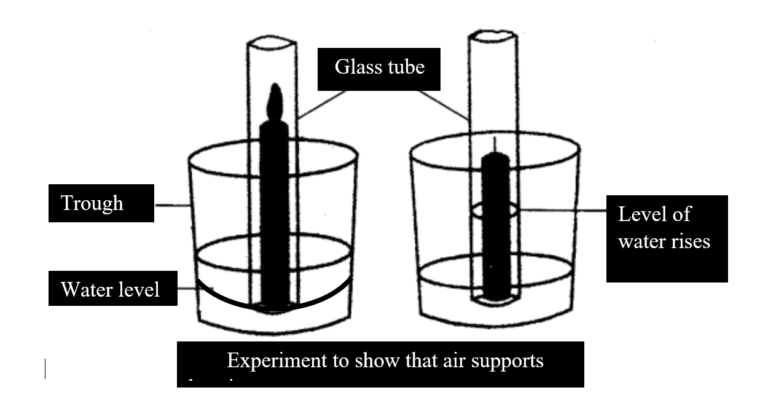Air around us: class 6: science: NCERT solutions
NCERT Class 6 Chapter “Air around us” notes explain different aspects of air. Here you will find all the facts and concepts related to air with some pictures. Besides, you will also get solutions which will be handy for quickly completing the homework and preparing for exams.

Air is present everywhere
All living things require air. But, have you ever seen air? The answer might be not but, certainly, you must have felt its presence in so many ways. You have noticed when the leaves of the trees rustle or the clothes hanging on a clothes-line sway or during the separation of sand and sawdust by winnowing.
Table of Contents
ToggleAir is present everywhere around us – How will you know?
- Take an empty open bottle. Turn it, upside down. Now, dip the open mouth of the bottle into the bucket filled with water as shown in the figure below. Look at the bottle. You will find that no water is entering inside the bottle.
- Now, slightly tilt the bottle. You will find that water starts entering the bottle. Simultaneously, you will also see bubbles coming out of the bottle. These bubbles were actually “air” that was present in the bottle.
- In fact, the bottle was filled completely with air initially. When the bottle was turned upside down and pushed inside the water, the water did not enter the bottle because there was no space for air to escape. But when the bottle was tilted, the air inside the bottle started coming out in the form of bubbles and water filled up the empty space that the air had occupied.
- This activity shows that air is present everywhere around us.

What is air made up of?
- Air is a mixture of many gases. The main composition of air is – Nitrogen, Oxygen, Carbon dioxide, water vapour, other gases and dust & smoke.
- The composition of air is – nitrogen (78%), oxygen (21%), carbon dioxide, water vapour, dust & smoke and other gases (1%).

Properties of Air
- Air occupies space.
- It is present everywhere around us.
- Air has no colour.
- One can see through it. It is transparent.
Atmosphere
- Our earth is surrounded by a huge envelope of air called atmosphere.
- The air envelope is thicker near the earth’s surface and as we go higher the density and the availability of air gradually decreases. This is because, as we go higher, the force of gravity decreases, so it is not able to hold large amount of air.
- The atmosphere is made of five different layers – the troposphere, the stratosphere, the mesosphere, the ionosphere and the exosphere.

Solution of the exercise
What is the composition of air?
Solution:
The composition of air is – nitrogen (78%), oxygen (21%), carbon dioxide, water vapour, dust & smoke and other gases (1%).
Which gas in the atmosphere is essential for respiration?
Solution:
Oxygen is an essential gas for respiration.
How will you prove that air supports burning?
Solution:
Take a candle and fix it in a glass filled with some water. Now light the candle. You will see a flame from the candle as the air around the candle starts supporting the burning. Now take a glass tube and cover the candle. After a few minutes, you will notice that the candle extinguished and the level of water inside the glass tube rises up. This is because the air inside the glass tube is exhausted and water takes its place. This experiment proves that the air supports burning.

How will you show that air is dissolved in water?
Solution:
Take some water in a glass or metal container. Heat it slowly on a tripod stand. Now look at the inner surface of the container. You will find tiny bubbles inside it. These bubbles indeed come from the air dissolved in water. By this experiment, we can definitely say that air is dissolved in water.
Why does a lump of cotton wool shrink in water?
Solution:
The lump of cotton wool shrinks in water because the air inside the cotton lumps is replaced by water. As a result, the volume of the cotton decreases and consequently, the cotton shrinks.
The layer of air around the earth is known as ___________.
Solution:
atmosphere
The component of air used by green plants to make their food, is ___________.
Solution:
Carbon dioxide
List five activities that are possible due to the presence of air.
Solution:
- Respiration
- Photosynthesis
- Burning
- Movement of sailing yachts, gliders, parachutes, aeroplanes
- Generation of electricity by windmills
How do plants and animals help each other in the exchange of gases in the atmosphere?
Solution:
Plants utilize carbon dioxide which is present in the atmosphere for photosynthesis. In the photosynthesis process, plants also release oxygen into the atmosphere. This oxygen is used by humans and in turn, they exhale carbon dioxide into the atmosphere again. In this way, plants and animals help each other in exchange of gases in the atmosphere.